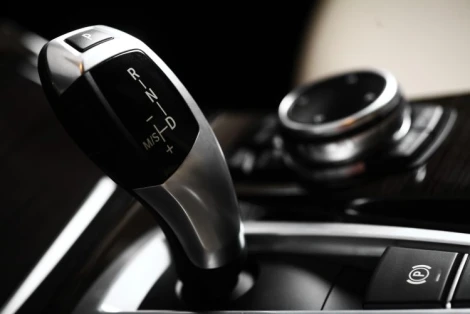
Shifting a vehicle in and out of gear may seem like a concept that is simple enough to grasp – but technological advances have led to what many refer to as “e-shifters”, which are not as well understood by consumers.
A traditional automatic transmission shifter makes use of a series of positions where the shifter will stay, identifying clearly whether it is in Park, Reverse, Neutral, Drive, or another gear. Many drivers may be so accustomed to these shifters that they use them without having to look – all the way forward to the engine is park, one down is reverse, three down is drive, and so on.
In recent years, auto manufacturers have begun implementing e-shifters, or monostable shifters, which have only three positions: front, middle, and back. These shifters are at rest in the middle. If you want to go in a specific direction, you push the shifter in that direction until the light appears for the gear you want. Once you let go, the shifter goes back to the resting position. One cannot determine what gear a vehicle is in simply by looking at the shifter itself, because it is always in the same resting position.
While these shifters may seem cutting-edge, they have been perplexing for consumers. Confusing transmission shifters can easily cause crashes and injuries when drivers mistakenly put their cars into the wrong gear or don’t put the cars into park. Chrysler added complicated shifters to some of their cars starting in the 2012 model year. The company is now voluntarily recalling those cars to make them safer. The company has also changed current models to address this problem. With a normal automatic shifter, the lever stays in place when you put it into gear. You can quickly tell what gear you’re in, simply by look and feel. But the 2014-2015 Jeep Grand Cherokee, and certain 2012-2014 Chrysler 300 and Dodge Chargers used a confusing shifter that pops back to center after picking a gear. You can’t tell what gear is engaged by feel alone and finding park or reverse reliably is difficult.
Consumer Reports’ testing found this design to be unintuitive – and lowered the car’s overall score as a result. Crash data shows the consequences of this bad design. The National Highways Traffic Safety Administration reports over 100 crashes were caused when the cars rolled away when owners thought they were in park. Chrysler has said there have been 41 injuries. The recall is a software fix that will change the electronic shifter logic to better protect owners who accidentally do not put the car into park. Chrysler had already changed the shifter design in newer 300s, Chargers, and Grand Cherokees as a result of customer feedback.
But Chrysler isn’t the only car company with confusing shifters. You also find them in Audi, BMW, Mercedes Benz, and Toyota Prius vehicles. Other companies, like General Motors, are just starting to roll them out in recent redesigns. Various design safeguards can help reduce the risk. Shutting off the ignition or opening the driver’s door should make cars with these types of shifters automatically shift into park. But Mercedes Benz vehicles do not do this. Instead, shutting off the car puts the car in neutral instead of park, allowing it to roll until a door is opened.
We hope that other automakers will follow Chrysler’s lead and make their shifters more intuitive and safer to use. Any instance where improved automobile safety is obvious should be taken by manufacturers, as motor vehicles are dangerous enough without additional safety risks.
Categories: Announcements, Safety Tips

